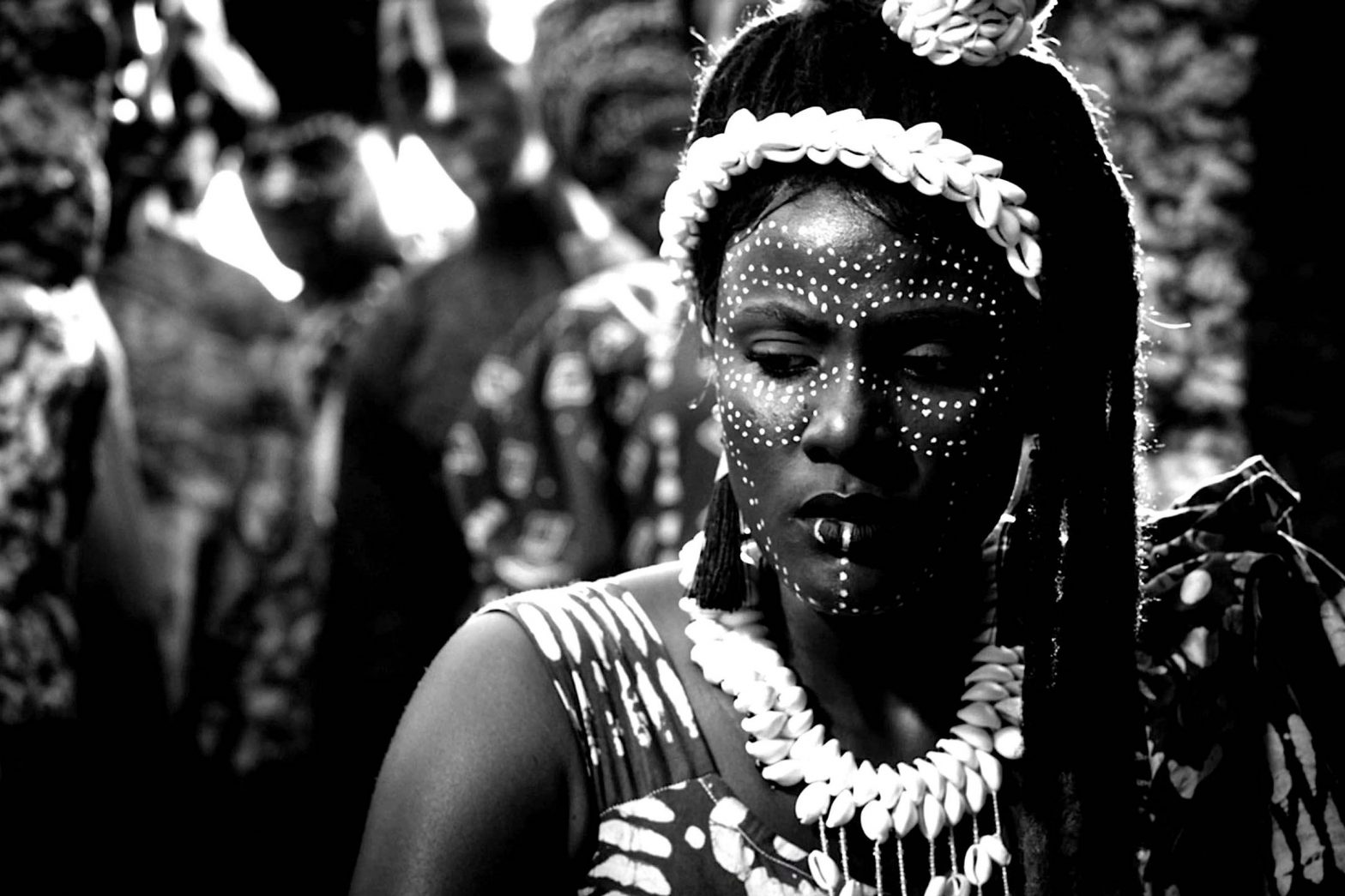/
Director C.J. Obasi’s Mami Wata is a monochromatic feast for the eyes that wants you to think about what it means to believe in something larger than yourself.
:format(webp)/cdn.vox-cdn.com/uploads/chorus_asset/file/24403489/2CF5Nd_Q.jpeg)
Out of all the films that debuted at this year’s Sundance Film Festival, none were quite as visually striking as Nigerian writer / director C.J. Obasi’s Mami Wata, a monochromatic modern-day myth about a small village during a time of upheaval. One doesn’t need to be familiar with Mami Wata’s eponymous embodiment of the divine feminine to appreciate its story about multiple generations of women doing everything in their power to keep their people safe. But as you let Mami Wata wash over you, the film paints a picture of people fighting to understand their beliefs in forces larger than themselves. And in each of those people, you can see shades of Mami Wata.
Set in a small village called Iyi, Mami Wata tells the tale of three women whose lives have been shaped by their people’s devotion to a powerful goddess of water, wealth, and health. Through her priestess Mama Efe (Rita Edochie), Mami Wata is said to dole out protection, advice, and good fortune to the faithful who are willing to honor the deity’s traditions that have been passed down through their culture for generations.
:format(webp)/cdn.vox-cdn.com/uploads/chorus_asset/file/24405332/knock_at_the_cabin_photo_abby_quinn_nikki_amuka_bird_dave_bautista_rupert_grint_1465030.jpeg)
Because Efe is Mami Wata’s anointed priestess, she and her biological daughter Zinwe (Uzoamaka Aniunoh) as well as her adoptive daughter Prisca (Evelyne Ily Juhen) all enjoy a certain revered status among their peers. But when a young boy suddenly falls ill and dies from a viral infection that Efe can’t save him from, long-held murmurs of doubt about Mama Efe’s connection to Mami Wata begin to turn into shouts, and many of Iyi’s people start to question whether the goddess is even real.
Much like the Mami Wata who is still venerated and worshiped throughout different parts of the African diaspora, Mami Wata, the film, is multifaceted, and the crisis of faith that shakes Iyi is one of the ways Obasi’s script illustrates the tension within Efe’s family. In different ways, Efe, a believer whose faith in tradition can’t be shaken, Zinwe, a passionate devotee yearning for more clarity, and Prisca, a skeptic who bites her tongue, all embody different aspects of Mami Wata.
Different as the three of them are, there is peace within their family as Mami Wata first opens. But when the women take in a mysterious man called Jasper (Emeka Amakeze), who washes up on Iyi’s beaches one day, an infectious revolutionary spirit begins to take hold of the village and reveals just how tenuous the balance of power there truly is.
Mami Wata begins as an artful chronicle of Efe contemplating which one of her daughters should succeed her one day. But the film parlays their personal drama into a larger narrative about tensions between traditional belief systems and a world being shaped by lifesaving modern technologies like vaccines. The world Prisca and Zinwe live in — gorgeously rendered in an array of deep blacks and ghostly whites — is an ordinary one filled with sandy beaches and roads that will lead you from the small village to larger, more Westernized cities if you follow them long enough. But there’s also an artful otherworldliness present all throughout Mami Wata thanks to cinematographer Lílis Soares’ eye for arresting, dreamlike compositions and a trio of staid yet resonant performances from Edochie, Aniunoh, and Juhen.
A number of Mami Wata’s central ideas err on the derivative side of things, and its shift into an action-oriented posturing in its final acts is somewhat disorienting. But those kinds of quirks feel like part of the art of crafting parables that riff on established myths and take bold chances to make them feel like fresh, unique works of art.
This review is based on a screening at the 2023 Sundance Film Festival.
